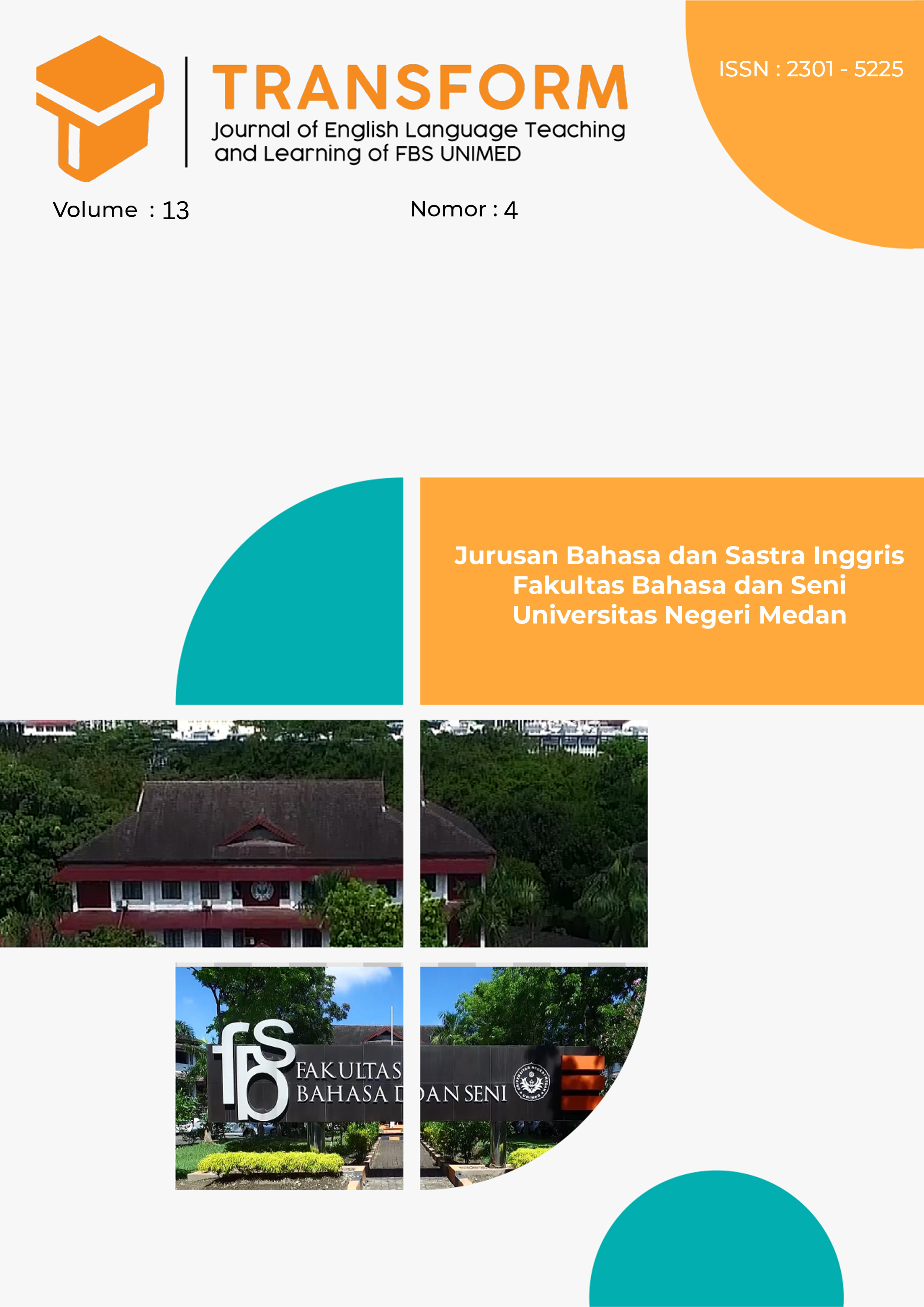Discourse Markers in Closed-Door Interview of 71st Miss Universe
DOI:
https://doi.org/10.24114/tj.v13i4.67248Keywords:
Discourse Markers, Closed-door Interview Discourse, Brinton's Theory, Textual Function, Miss UniverseAbstract
Discourse Markers (DMs) are indispensable elements in spoken communication, aiding in establishing coherence and organizing discourse in both textual and verbal interactions, as delineated by Brinton (2017). The objective of this research is to delineate the functions, and occurrences of Discourse markers employed by the finalists of the 71st Miss Universe 2022. This study employs a qualitative descriptive design to analyze the frequency and context of discourse markers based on the recorded video interviews of the contestants, employing Brinton's (1996) theory as the analytical framework. Additionally, the analysis of the data reveals the types and functions used, and their effects on conversation. the researcher found sixty-tree data which contain 128 DMs that consist of nineteen types. All these findings are not having the same function.References
Al-khazraji, A. (2019). Analysis of Discourse Markers in Essays Writing in ESL Classroom. British University Dubai.
Banguis-Bantawig, R. (2019). The role of Discourse Markers in the speeches of selected Asian Presidents. Siquijor State College Philippines.
Blakemore, D. (1987). Semantic Constraints on Relevance. Oxford: Blackwell.
Brinton, L. J. (1996). Pragmatic Markers in English: Grammaticalization and Discourse Functions. Berlin: New York: Mouton de Gruyter.
Brinton, L. J. (2017). The Evolution of Pragmatic Markers in English: Pathways to Change. Cambridge: Cambridge University Press.
Brinton, L. J. (2023). Pragmatics in the History of English. Cambridge: Cambridge University Press.
Faharani, M. V., Ghane, Z. (2022). Unpacking the function(s) of Discourse Markers in academic spoken English: a corpus-based study. AJLL 45, 49-70. DOI: 10.1007/s44020-022-00005-3
Fraser, B. (1999). What Are Discourse Markers? Journal of Pragmatics. 31, 931-952. DOI: 10.1016/S0378-2166(98)00101-5
Fraser, B. (2006). Towards a Theory of Discourse Markers in K. Fischer (Ed.), Approaches to Discourse Particles. Elsevier.
Halliday, M. A. K. & Hasan, R. (1976). Cohesion in English. London: Longman.
Huang, L. (2019). A Corpus-Based Exploration of the Discourse Marker Well in Spoken Interlanguage. Language and Speech, 62(3), 570-593. DOI: 10.1177/0023830918798863
Luke, K. (1990). Utterance particles in Cantonese conversation. Philadelphia: J. Benjamins Pub. Co.
Luo Fei & Zou. (2023). The Function and Meaning Potentials of Discourse Markers in the TV Talk Show Discourse. Shanghai Ocean University.
Miss Universe. (2023). Miss Universe Organization About: https://www.missuniverse.com/about
Nurlaela Rahayati., R. H. (2021). Discourse Markers in Abstracts of International Journal. English Education Program: Galuh University.
Pujalinda, M. (2022). Discourse Markers in Research Seminar. Akademi Keperawatan YPPP Wonomulyo.
Quirk, R., Greenbaum, S., Leech, G. & Svartvik, J. (1985). A Comprehensive Grammar of the English Language. Longman.
Schiffrin, D. (1987). Discourse Markers. Cambridge University Press.
Schourup, L. (1985). Common Discourse Particles in English Conversation: Like, Well, Y’know. New York: Garland.
Verdonik, D. Ž. (2008). The Impact of Context on Discourse Markers use in two Conversational Genres. Discourse Studies. 10(6), 759-775.
Yule. (1996). Pragmatics. New York: Oxford University Press.
Downloads
Published
How to Cite
Issue
Section
License
Copyright (c) 2025 Tupa Parulian Siburian, Immanuel Prasetya Ginting

This work is licensed under a Creative Commons Attribution-ShareAlike 4.0 International License.
Authors who publish with this journal agree with the following terms:
- Authors retain copyright and grant the journal right of first publication with the work simultaneously licensed under a Creative Commons Attribution License that allows others to share the work with an acknowledgment of the work's authorship and initial publication in this journal.
- Authors are able to enter into separate, additional contractual arrangements for the non-exclusive distribution of the journal's published version of the work (e.g., post it to an institutional repository or publish it in a book), with an acknowledgment of its initial publication in this journal.
- Authors are permitted and encouraged to post their work online (e.g., in institutional repositories or on their website) prior to and during the submission process, as it can lead to productive exchanges, as well as earlier and greater citation of published work (See The Effect of Open Access).
- This work is licensed under a Creative Commons Attribution-ShareAlike 4.0 International License.








